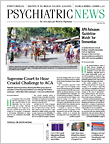Teen drivers whose Virginia high school started classes at 8:45 a.m. had significantly lower rates of car crashes than peers in an adjacent county where high school began at 7:20 a.m., researchers at Eastern Virginia Medical School in Norfolk have found.
Robert Vorona, M.D., an associate professor of medicine, and colleagues compared data on weekday crashes and time of day for drivers aged 16 to 18 and adult drivers in two demographically similar Virginia counties for the school years 2009-2010 and 2010-2011. The combined total high school enrollment in the two counties was about 34,000 students.
In 2009-2010, licensed teen drivers in Henrico County, where high schools started at 8:45 a.m., had a weekday crash rate about 29 percent lower than teen drivers in neighboring Chesterfield County, where classes started at 7:20 a.m.
Henrico had 37.9 crashes per 1,000 teen drivers, while Chesterfield had 48.8 crashes per 1,000 teen drivers that school year. Peak crash rates in Henrico occurred one hour later in the morning and two hours later in the afternoon than in Chesterfield, consistent with commute times. Crash rates in 2010-2011 were similar.
Adult crash rates and traffic congestion did not differ in either county in the study years, the researchers reported in the November 2014 Journal of Clinical Sleep Medicine. Because the counties are adjacent, weather conditions probably had no impact on the differing crash rates.
The Chesterfield teens had significantly more crashes that involved running off the road to the right than did the Henrico students—the type of crash associated with falling asleep at the wheel.
Since the researchers were able to obtain only aggregate driving data from the Virginia Department of Motor Vehicles, they could not examine individual teens’ sleep habits, work schedules, or other factors that may have contributed to crashes.
The findings, they said, “suggest that early high school start times put teens at risk for sleep restriction and conflict with the phase delay that typifies adolescents’ circadian rhythms.” Their results replicate and extend research Vorona and colleagues conducted in two other Virginia counties in 2007 and 2008.
According to an accompanying editorial, more than half of fall-asleep crashes occur in drivers aged 25 or younger. Per mile driven, drivers aged 16 to 19 are three times more likely than drivers aged 20 and older to have a fatal crash, said Saba Hamiduzzaman, M.D., and Barbara Phillips, M.D., of the University of Kentucky College of Medicine. ■
An abstract of “Adolescent Crash Rates and School Start Times in Two Central Virginia Counties, 2009-2011: A Follow-up Study to a Southeastern Virginia Study, 2007-2008” can be accessed
here.

